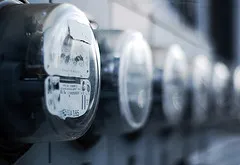
The Philippines is on the road towards 90% household electrification
The Philippine government seeks to energize around 370,900 new household connections every year until 2017.
In line with the Energy Reform Agenda that aims to provide energy access for more, the Department of Energy is now preparing the Roadmap to achieve 90% Household Electrification by 2017.
The Roadmap will consist of the strategies to address the policy, regulatory and institutional barriers to the country’s rural and missionary electrification program which is envisioned to fast-track the implementation of household electrification activities by all proponents including the Distribution Utilities, Electric Cooperatives, the NPC’s Small Power Utilities Group, Qualified Third Parties, and other service providers that employ decentralized options such as solar home systems and mini-grid, among others.
To reach the 90% household electrification target, the Government seeks to energize around 370,900 new household connections every year until 2017 of which around one million households are expected to be electrified using decentralized options such as the solar home systems.
This is to improve the electrification level of the country, which as of 30 June 2011 stands at 83% or around 14.4 million households of the 17.4 million households in the country. Electrification level in the franchise areas of the 119 Electric Cooperatives in country, meanwhile, stands at 75% or 9,057,448 connections out of the 12,157,000 potential connections for the first semester of 2011.
The Roadmap is being crafted through the World Bank-assisted Rural Power Project and will be a key action plan consisting of the policy interventions, individual projects and investments to realize the attainment of the household electrification targets of the Government through the participation of all stakeholders. The said Roadmap is also consistent with the overall Ten-Point Action Programme of the Aquino Government.
The RPP is also supporting other related activities such as the preparation of the Missionary Electrification Development Plan 2012-2017 and the on-going World Bank-financed “Philippines: Output-based Aid For Energy Access Issues and Concerns” which aims to develop a unified national output-based support mechanism to enhance access of rural households to electricity in the country. All these final RPP initiatives are also expected to further sustain Government’s thrusts towards the total electrification of the country as enshrined in the Electric Power Reform Act of 2011.
Both the Roadmap for 90% Household Electrification by 2017 and the MEDP 2012-2017 will be completed by the end of December 2011.
Photo from B Tal








![Cross Domain [Manu + SBR + ABF + ABR + FMCG + HBR + ]](https://cmg-qa.s3.ap-southeast-1.amazonaws.com/s3fs-public/styles/exclusive_featured_article/public/2025-01/earth-3537401_1920_4.jpg.webp?itok=WaRpTJwE)
![Cross Domain [SBR + ABR]](https://cmg-qa.s3.ap-southeast-1.amazonaws.com/s3fs-public/styles/exclusive_featured_article/public/2025-01/pexels-jahoo-867092-2_1.jpg.webp?itok=o7MUL1oO)









 Advertise
Advertise


